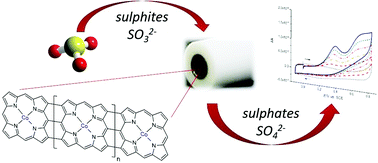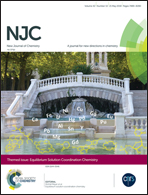A glassy carbon electrode modified by a triply-fused-like Co(ii) polyporphine and its ability for sulphite oxidation and detection
Abstract
This article presents a Co(II) polyporphine conductive polymer easily and rapidly obtained (less than 2 h 30 min) on the surface of a glassy carbon electrode from the transformation of an initial Mg(II) porphine solution in a four-step process (including electrochemical and chemical stages). The intimate molecular structure is argued on the basis of the electrochemical response of the modified electrode, as well as its surface characterization. Owing to its apparent stability in water over potential cycling and its high density in active Co(II) centers, the electrosynthesized film shows its ability to catalyze sulphite oxidation in aqueous solutions. The mechanism of this molecular catalysis was assessed through specifically designed voltammetric experiments. The performances of this system as an analytical method for sulphite determination in water were also evaluated (limit of detection and limit of quantification: 0.195 and 0.649 mmol L−1, respectively).

- This article is part of the themed collection: Equilibrium Solution Coordination Chemistry


 Please wait while we load your content...
Please wait while we load your content...